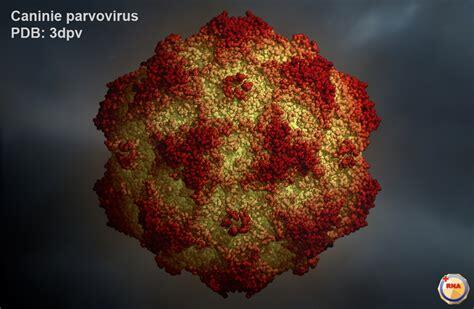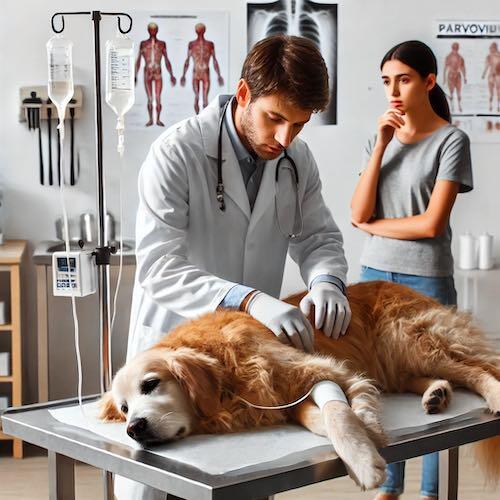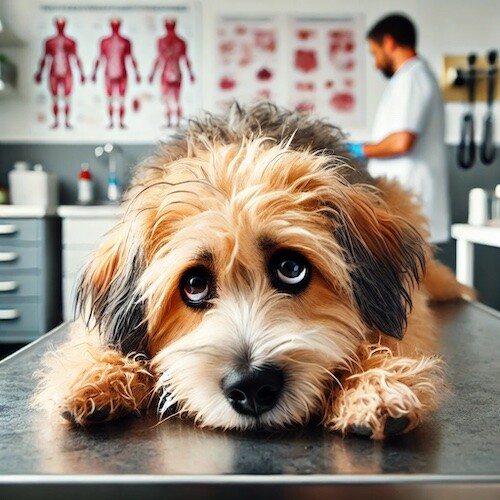
Buy Best Parvovirus Disinfecting Cleaner Here
Canine Parvovirus: Symptoms, Treatment, and Prevention Tips for Dog Owners
Canine parvovirus (CPV) is a highly contagious viral disease that affects dogs, particularly puppies between six weeks and six months old. The virus is known for its rapid onset and severe symptoms, often requiring urgent veterinary care. Understanding parvovirus, its symptoms, treatment, and prevention is crucial for any dog owner or breeder. This comprehensive guide will cover all aspects of canine parvovirus, providing you with the knowledge needed to protect your furry friend.
Introduction to Canine Parvovirus
What is Canine Parvovirus?
Canine parvovirus is a highly contagious virus that primarily affects the gastrointestinal tract of dogs. It was first identified in the late 1970s and has since become a major concern for dog owners and veterinarians worldwide. The virus is known for its ability to survive in the environment for extended periods, making it particularly challenging to control and eradicate. CPV is resilient and can withstand harsh conditions, allowing it to persist on surfaces and in the soil for months or even years. This durability contributes to the widespread nature of the virus and the difficulty in eliminating it from contaminated areas.
Types of Canine Parvovirus
There are two main types of canine parvovirus:
- CPV-2a and CPV-2b: These are the most common strains, affecting the intestines and causing severe gastrointestinal symptoms. They are known for their rapid spread and ability to cause significant illness in infected dogs.
- CPV-2c: A newer and more virulent strain that can cause similar symptoms but is more resistant to some forms of treatment. This strain has been reported to cause more severe disease and has a broader geographical distribution.
Understanding the different strains of CPV is important for veterinarians and researchers as they develop more effective prevention and treatment strategies. Each strain has its own characteristics and may respond differently to various interventions, making continuous study and adaptation necessary.
Transmission and Risk Factors
How is Parvovirus Transmitted?
Canine parvovirus is highly contagious and can spread through direct contact with an infected dog or through indirect contact with contaminated objects, such as:
- Feces: The virus is shed in large quantities in the feces of infected dogs, which is the primary mode of transmission. Even a small amount of infected fecal matter can contain millions of viral particles.
- Surfaces: Kennels, food and water dishes, leashes, and other objects can become contaminated with the virus. The virus can survive on these surfaces for an extended period, making it easy to spread in environments where multiple dogs are present.
- Hands and Clothing: Humans can inadvertently spread the virus by handling infected dogs or contaminated objects. Proper hygiene practices, such as washing hands and disinfecting clothing, are essential to prevent transmission.
Risk Factors
Several factors can increase the risk of a dog contracting parvovirus:
- Age: Puppies between six weeks and six months old are most susceptible due to their immature immune systems. The natural antibodies received from their mothers begin to wane during this period, making them more vulnerable to infections.
- Vaccination Status: Unvaccinated or incompletely vaccinated dogs are at higher risk. Ensuring that puppies receive their full course of vaccinations on schedule is crucial for protection.
- Breed: Certain breeds, such as Rottweilers, Doberman Pinschers, and American Pit Bull Terriers, have a higher susceptibility to the virus. Genetic factors may play a role in this increased vulnerability.
- Environment: Dogs in densely populated areas, such as shelters or breeding facilities, are at increased risk due to the higher likelihood of exposure. Close quarters and shared spaces facilitate the spread of the virus.
Recognizing these risk factors can help dog owners take proactive measures to protect their pets, such as ensuring timely vaccinations and maintaining a clean environment
Symptoms of Canine Parvovirus
Gastrointestinal Symptoms
The most common form of parvovirus infection affects the gastrointestinal tract, leading to severe symptoms, including:
- Vomiting: Often severe and persistent, leading to dehydration. The vomiting may be accompanied by a lack of appetite and general discomfort.
- Diarrhea: Frequently bloody and foul-smelling, contributing to dehydration and electrolyte imbalances. The diarrhea can be so severe that it leads to significant fluid loss and shock.
- Loss of Appetite: Affected dogs may refuse to eat, worsening their weakened state. This loss of appetite contributes to the rapid decline in condition.
- Lethargy: Extreme fatigue and weakness are common as the body fights the infection. Affected dogs may become listless and uninterested in their surroundings.
- Fever: An elevated body temperature may be present in some cases. Fever is a sign of the body’s immune response to the infection.
These symptoms often appear suddenly and can escalate quickly, making prompt veterinary attention critical. The combination of vomiting, diarrhea, and loss of appetite can lead to rapid deterioration, so recognizing and responding to these signs early is essential.
Cardiac Symptoms
In rare cases, parvovirus can affect the heart, particularly in very young puppies. This form, known as myocardial parvovirus, can cause sudden death due to heart failure. Symptoms may include:
- Difficulty Breathing: Rapid or labored breathing due to fluid accumulation in the lungs. This respiratory distress can be severe and life-threatening.
- Weak Pulse: A weak or irregular heartbeat. This can indicate severe cardiac involvement and requires immediate medical intervention.
- Collapse: Sudden collapse and unresponsiveness. This dramatic presentation is often fatal without rapid and aggressive treatment.
Cardiac involvement is less common but extremely serious. Puppies affected by myocardial parvovirus often show signs of severe distress and may succumb to the disease very quickly. Immediate veterinary care is essential for any puppy showing signs of respiratory or cardiac distress.

Read More: 15 Dog Breeds With The Highest Cancer Rates
Diagnosis
Veterinary Examination
If parvovirus is suspected, a veterinarian will perform a thorough examination, including:
- Physical Examination: Assessing the dog’s overall condition, hydration status, and abdominal pain. The vet will check for signs of dehydration, such as dry gums and skin elasticity, and may palpate the abdomen to assess pain or swelling.
- History: Gathering information about the dog’s vaccination status, exposure to other dogs, and onset of symptoms. Understanding the dog’s recent activities and environments can help pinpoint potential sources of infection.
Diagnostic Tests
Several tests can confirm a parvovirus infection:
- Fecal ELISA Test: A quick and commonly used test that detects parvovirus antigens in the feces. This test is widely available and provides results within minutes.
- PCR Test: A more sensitive test that detects the virus’s genetic material, providing a definitive diagnosis. PCR testing can identify even small amounts of viral DNA, making it highly accurate.
- Complete Blood Count (CBC): This test can show a decrease in white blood cells, which is indicative of a viral infection. Low white blood cell counts are often seen in parvovirus cases and can help confirm the diagnosis.
- Serology: Tests that measure the presence of antibodies against parvovirus in the blood. Serological testing can help determine if the dog has been exposed to the virus previously or has developed immunity.
Accurate diagnosis is essential for appropriate treatment and care. The combination of clinical signs and diagnostic tests allows veterinarians to confirm parvovirus and develop a tailored treatment plan.
Treatment
Supportive Care
There is no specific antiviral treatment for canine parvovirus; therefore, supportive care is essential to help the dog’s immune system fight the infection. This includes:
- Fluid Therapy: Intravenous fluids are administered to combat dehydration and maintain electrolyte balance. This therapy is crucial for stabilizing the dog and preventing shock.
- Nutritional Support: Ensuring the dog receives adequate nutrition through tube feeding if necessary. Proper nutrition supports the dog’s recovery and helps maintain strength.
- Medications: Anti-nausea medications, antibiotics to prevent secondary bacterial infections, and pain relief as needed. These medications help manage symptoms and prevent complications.
Hospitalization
Severely affected dogs often require hospitalization for intensive care. This provides continuous monitoring and the ability to administer treatments and medications as needed. In some cases, blood transfusions may be necessary to address severe anemia caused by gastrointestinal bleeding. Hospitalization ensures that the dog receives round-the-clock care and monitoring, which can be critical for survival.
Home Care
For dogs with milder symptoms or those recovering from hospitalization, home care involves:
- Hydration: Ensuring the dog has constant access to fresh water and administering oral rehydration solutions if needed. Maintaining hydration is essential for recovery.
- Diet: Offering easily digestible, high-quality food in small, frequent meals. Gradually reintroducing food helps prevent further gastrointestinal upset.
- Monitoring: Keeping a close eye on the dog’s condition, including appetite, energy levels, and bowel movements. Regular monitoring allows for early detection of any complications or setbacks.
Proper home care and follow-up with the veterinarian are essential for a full recovery. Owners must be diligent in providing supportive care and monitoring their dog’s progress to ensure the best possible outcome.
Prevention
Vaccination
Vaccination is the most effective way to prevent parvovirus. Puppies should receive a series of vaccinations starting at six to eight weeks of age, followed by boosters every three to four weeks until 16 weeks of age. Adult dogs should receive regular booster shots as recommended by their veterinarian. Keeping up with the vaccination schedule is crucial for maintaining immunity and protecting against infection.
Hygiene and Sanitation
Maintaining a clean environment is crucial in preventing the spread of parvovirus:
- Disinfection: Use a bleach solution (1 part bleach to 30 parts water) to disinfect surfaces and objects that may be contaminated. Regular cleaning of kennels, dishes, and other items is essential to reduce the risk of transmission.
- Isolation: Keep infected dogs isolated from healthy dogs to prevent transmission. This measure is critical in multi-dog households and kennels.
- Hand Washing: Thoroughly wash hands after handling infected dogs or cleaning contaminated areas. Proper hand hygiene helps prevent the spread of the virus.
Avoiding Exposure
Minimize your dog’s exposure to potentially contaminated environments:
- Dog Parks: Avoid dog parks and other high-traffic areas until your puppy is fully vaccinated. These areas can be hotspots for virus transmission.
- Shelters and Breeding Facilities: Ensure these places follow strict sanitation and vaccination protocols. Responsible management practices can significantly reduce the risk of outbreaks.
By following these preventive measures, dog owners can significantly reduce the risk of their pets contracting parvovirus. Preventing exposure and maintaining good hygiene are key components of effective disease control.

The Importance of Early Intervention
Recognizing Symptoms Early
Early recognition of parvovirus symptoms and prompt veterinary intervention can significantly improve the chances of survival. If you notice any signs of parvovirus in your dog, contact your veterinarian immediately. Early intervention allows for timely treatment and supportive care, which can make a critical difference in the outcome.
Quick Response
A quick response can make a critical difference in the outcome of the disease. Delaying treatment can lead to severe dehydration, secondary infections, and a higher risk of mortality. Prompt veterinary care can stabilize the dog, manage symptoms, and provide the necessary support for recovery.
Understanding the urgency of parvovirus and acting quickly is essential for improving survival rates. Educating dog owners about the signs and symptoms of parvovirus can help ensure that affected dogs receive the care they need as soon as possible.
Understanding the Long-term Effects
Recovery and Aftercare
Most dogs that survive parvovirus make a full recovery with proper care. However, recovery can be prolonged, and ongoing veterinary follow-up is necessary to ensure the dog regains strength and health. Monitoring weight, appetite, and overall well-being is important during the recovery period.
Immune System
Dogs that recover from parvovirus develop immunity to the virus, but they can still be carriers for a period. Ensuring they receive regular health check-ups and maintaining good hygiene practices can help manage any potential risks. Continued vigilance is necessary to prevent the spread of the virus to other susceptible dogs.
Future Health
Monitoring for any long-term health issues, such as digestive problems or weakened immune systems, is essential. Your veterinarian can provide guidance on managing these issues and ensuring your dog leads a healthy life post-recovery. Some dogs may experience lingering effects from the infection, requiring ongoing care and attention.
Research and Developments
Advances in Treatment
Ongoing research aims to improve the treatment and prevention of canine parvovirus. New antiviral drugs and immunotherapy options are being explored to provide more effective ways to combat the virus. Researchers are also investigating supportive therapies that can enhance the body’s immune response and improve recovery outcomes.
Vaccination Protocols
Researchers continue to study vaccination protocols to determine the most effective schedules and methods for different populations of dogs. This includes developing vaccines that provide longer-lasting immunity and are effective against multiple strains of the virus. Improved vaccines can help reduce the incidence of parvovirus and protect more dogs from this devastating disease.
Genetic Research
Genetic research is helping to identify factors that influence susceptibility to parvovirus. Understanding the genetic basis of susceptibility can lead to more targeted prevention strategies and improve breeding practices. This research may also uncover new therapeutic targets for treating infected dogs.
Frequently Asked Questions (FAQs)
Can parvovirus affect humans or other animals?
Canine parvovirus specifically affects dogs and does not infect humans. However, similar parvoviruses can affect other animals, such as cats (feline panleukopenia) and wildlife. It is important to follow proper hygiene practices to prevent cross-species contamination. Ensuring that all pets are vaccinated and maintaining clean environments can help prevent the spread of these viruses.
How long does the virus survive in the environment?
Canine parvovirus is highly resilient and can survive in the environment for months, or even years, under certain conditions. This makes thorough disinfection and proper sanitation practices critical in preventing the spread of the virus. Regular cleaning and disinfection of areas where dogs congregate can help reduce the risk of transmission.
Can a vaccinated dog get parvovirus?
While vaccination significantly reduces the risk of infection, no vaccine is 100% effective. In rare cases, vaccinated dogs can still contract parvovirus, especially if they are exposed to a highly contaminated environment or have an incomplete vaccination schedule. Ensuring that dogs receive their full course of vaccinations and boosters is essential for maximum protection.
What should I do if I suspect my dog has parvovirus?
If you suspect your dog has parvovirus, contact your veterinarian immediately. Isolate your dog from other pets and follow your vet’s instructions for care and treatment. Early intervention is crucial for the best chance of recovery. Prompt veterinary care can help manage symptoms and provide the necessary support for your dog.
Can parvovirus be cured?
There is no cure for parvovirus, but with prompt and appropriate supportive care, many dogs can recover. Treatment focuses on managing symptoms and supporting the dog’s immune system to fight the infection. With proper care and monitoring, affected dogs can make a full recovery and lead healthy lives.
Conclusion
Canine parvovirus is a serious and potentially fatal disease that requires vigilance, prompt action, and preventive measures to protect your dog. Understanding the virus, recognizing the symptoms, and knowing how to prevent and treat it can save your dog’s life. By staying informed and taking proactive steps, you can help ensure the health and well-being of your furry friend.
